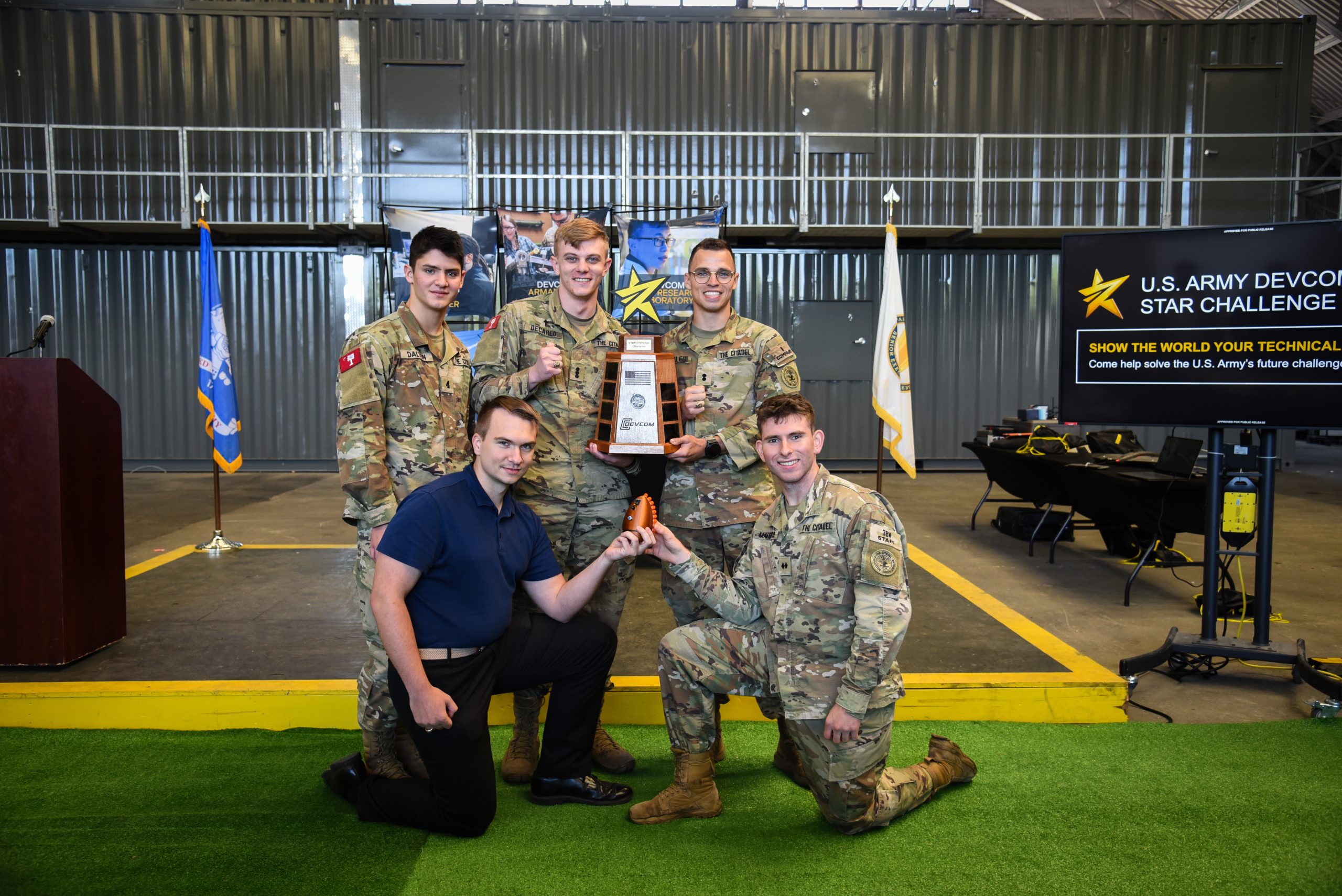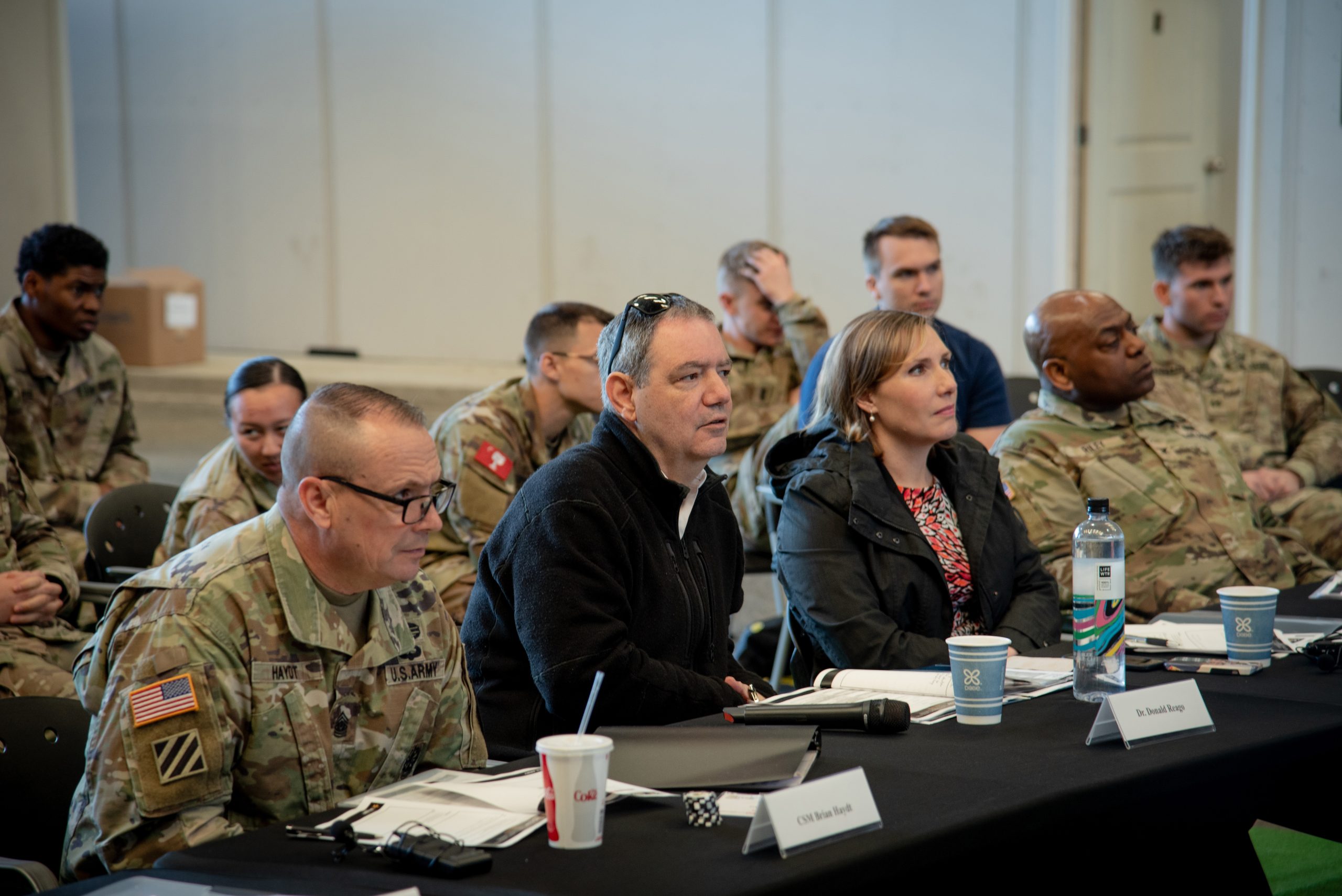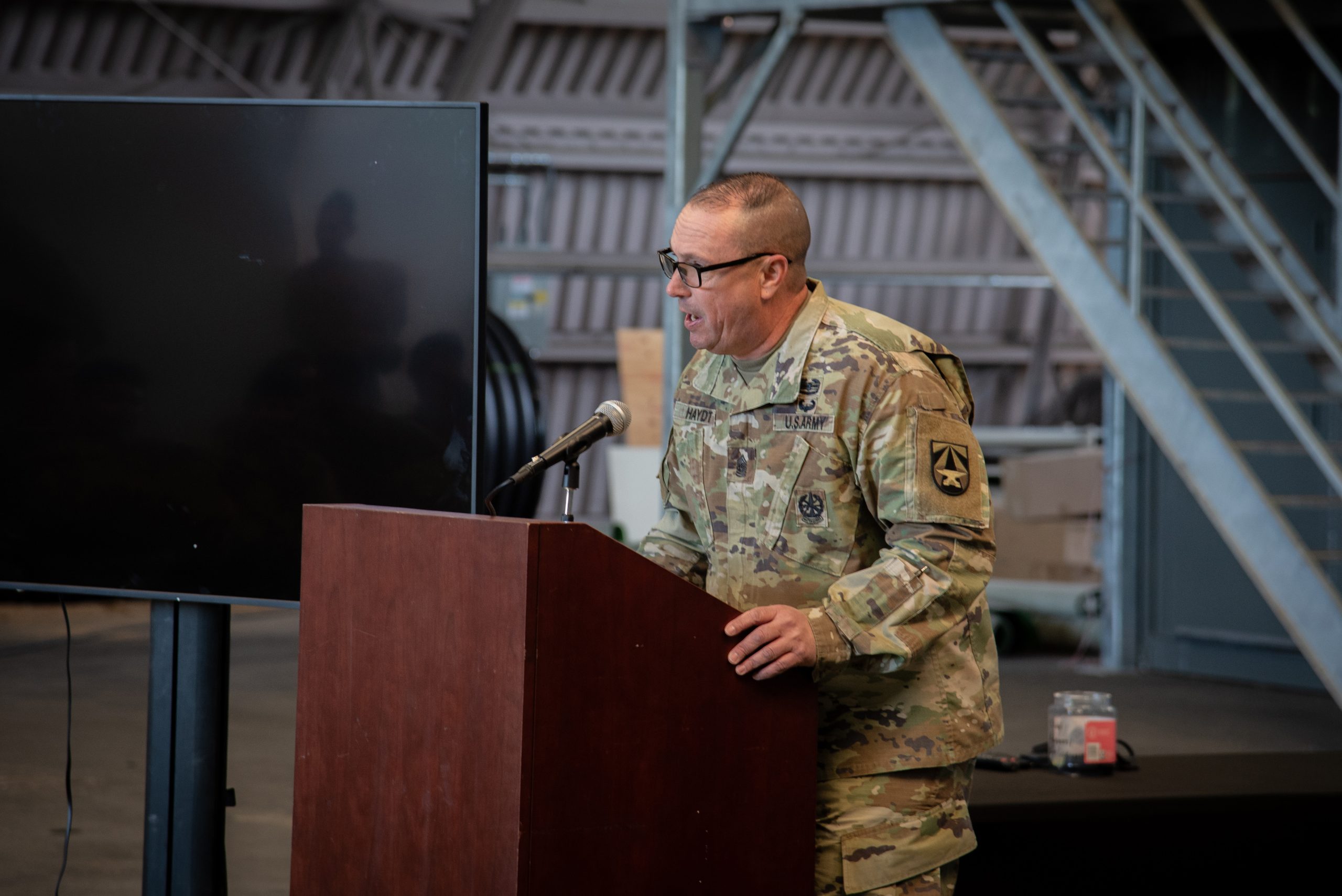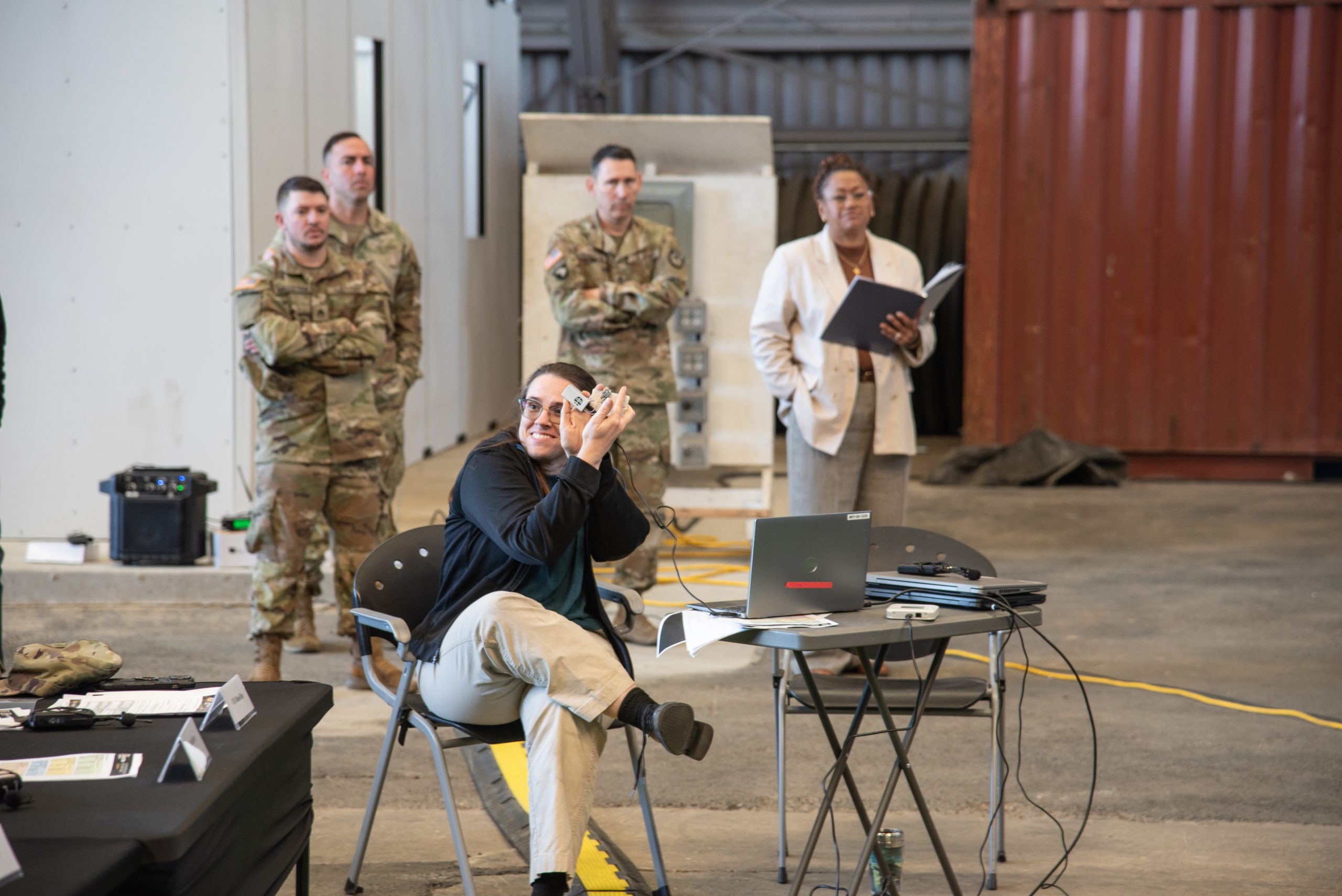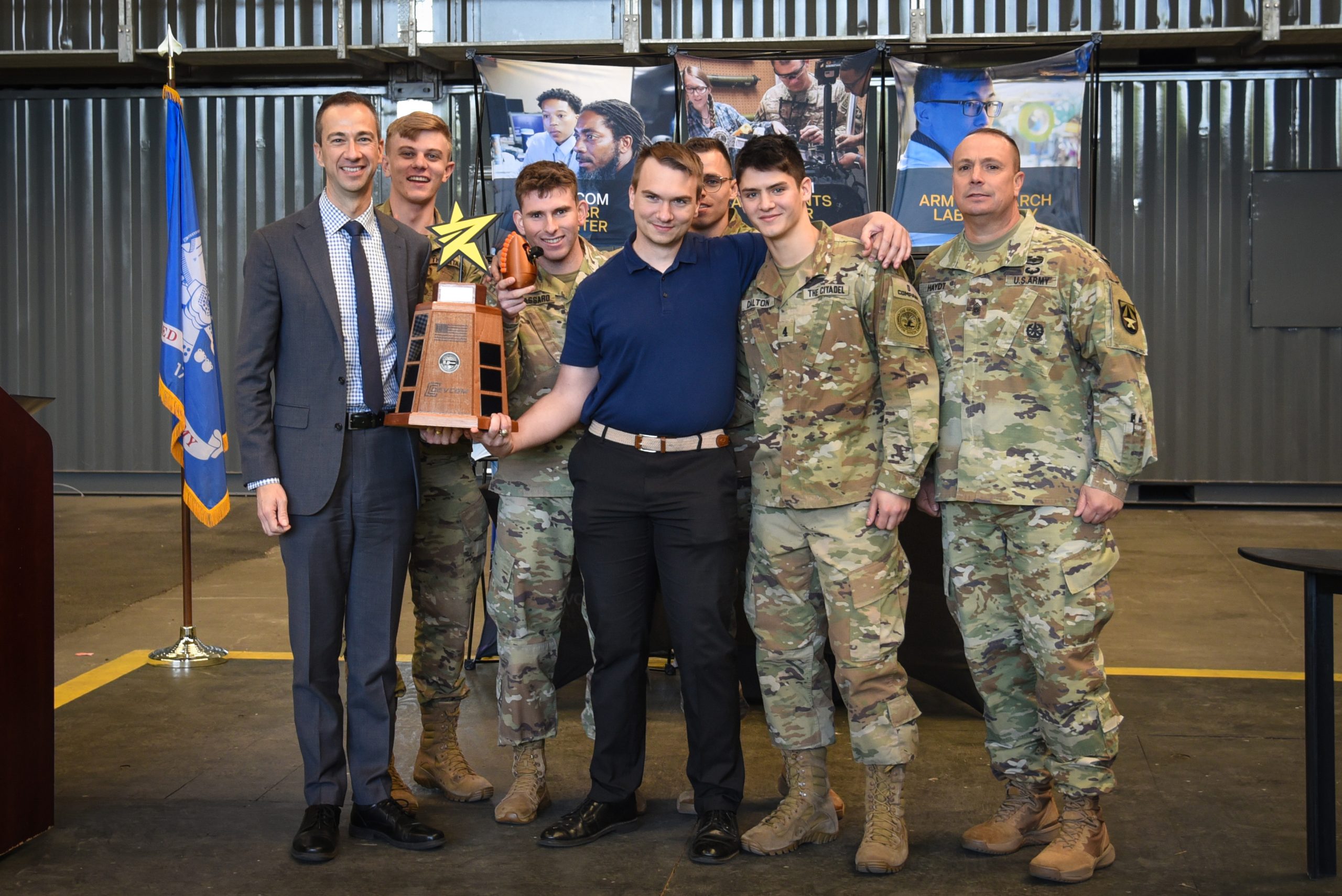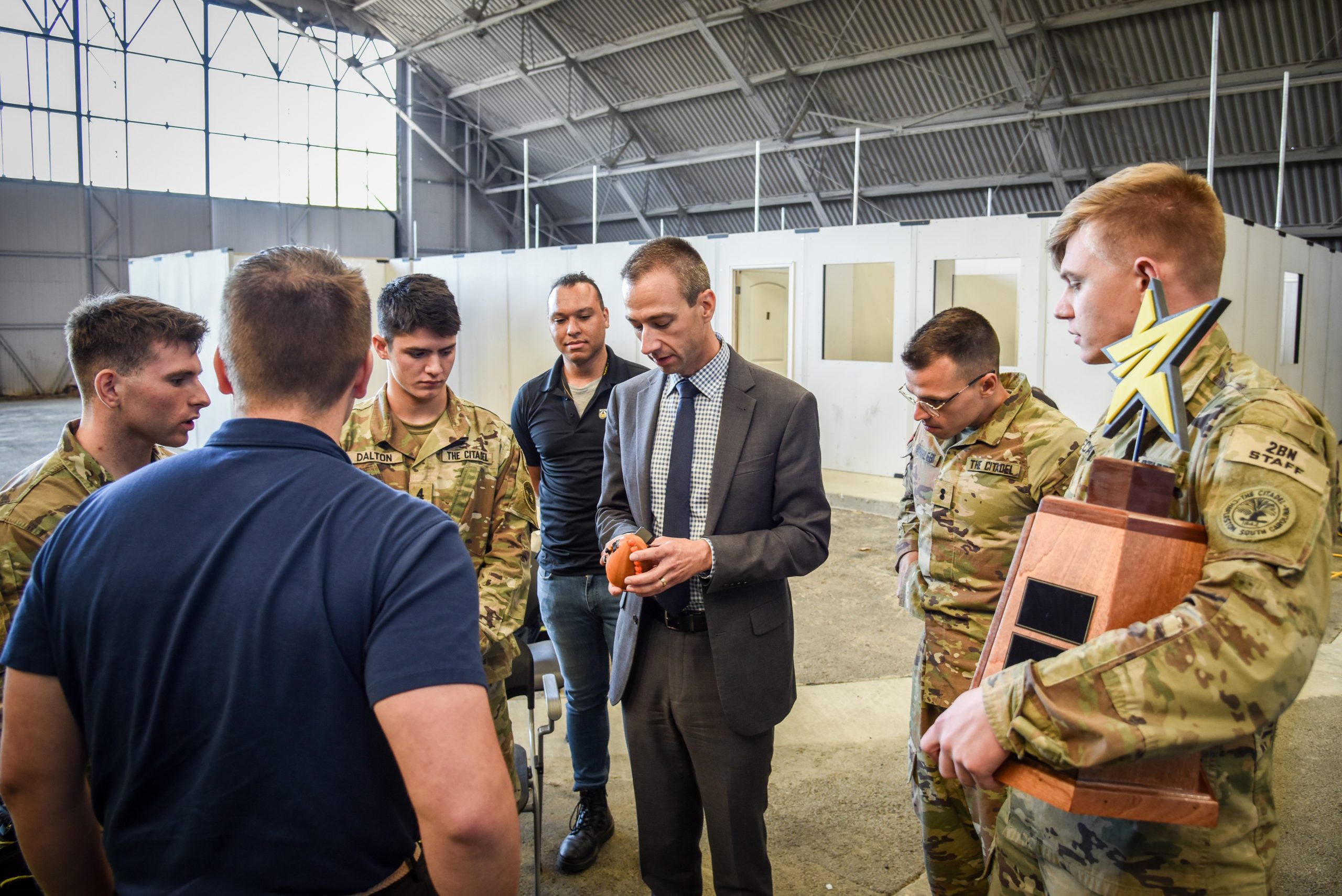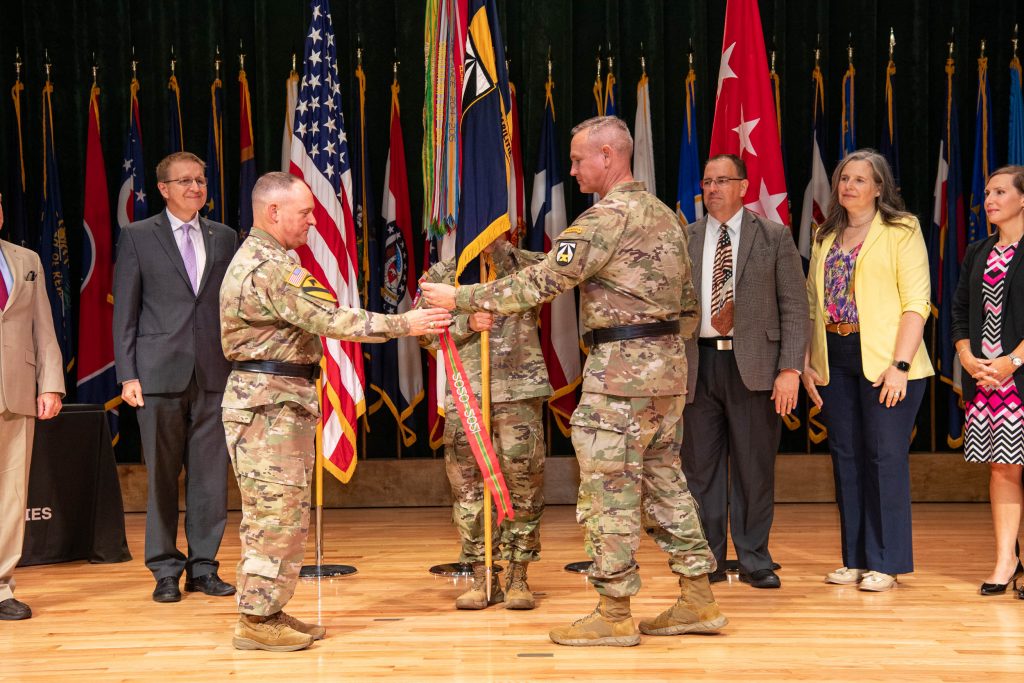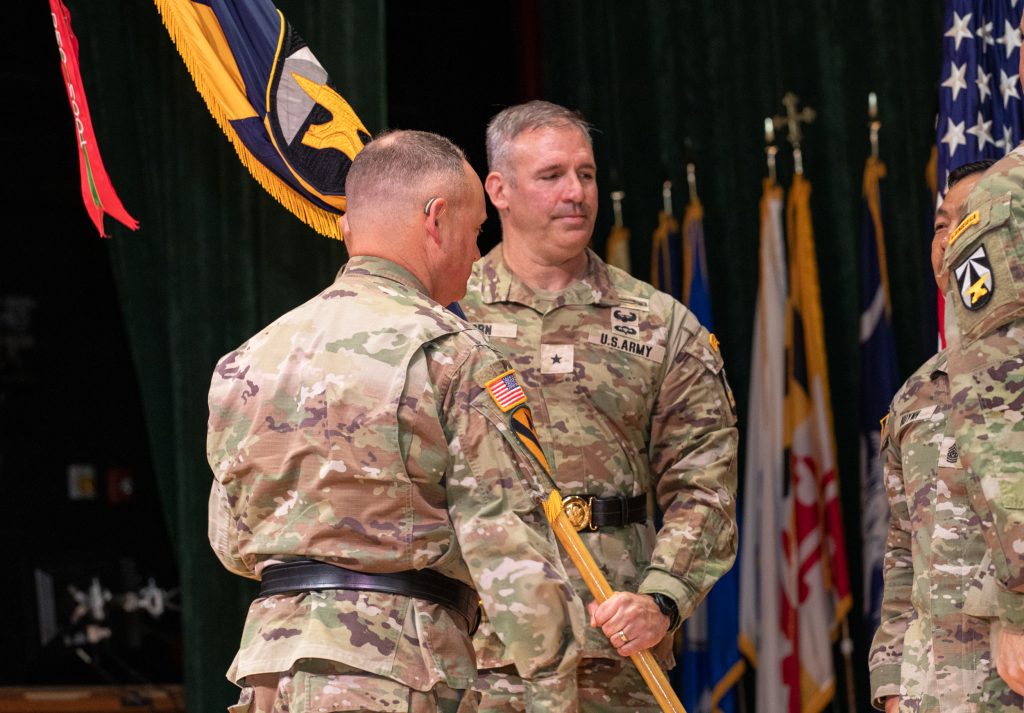Inaugural DEVCOM STAR Challenge shines bright with success
May 21, 2024By Ryan Rayno, DEVCOM Public Affairs
FORT BELVOIR, Va. – The U.S. Army Combat Capabilities Development Command, or DEVCOM, wrapped up its inaugural 9-month long Science, Technology, And Research, or STAR, Challenge STEM competition with a finalist event and award ceremony April 22, 2024, at Fort Belvoir, Virginia.
The science, technology, engineering and math competition served as an opportunity to leverage the next generation of technical and warfighting excellence by challenging students from senior military colleges.
The focus of the challenge was threat detection, and asked students to design a capability to detect items of potential interest to Soldiers.
Teams worked alongside DEVCOM civilians and noncommissioned officers, who served as mentors and stewards of DEVCOM as the preeminent technology organization of the Army and as an employment opportunity.
“For competitions like this, I think there’s often an assumption that students are given fictional problem sets to work on, and that designs they come up with won’t go anywhere,” Command Sgt. Maj. Brian Haydt, the senior enlisted advisor for DEVCOM, said. “For the STAR Challenge, this couldn’t be further from the truth.
“The projects they worked on addressed real challenges faced by our Army, and proposed solutions that can empower future Soldiers who rely on the combat capabilities developed by bright innovators.”
“The projects they worked on addressed real challenges faced by our Army, and proposed solutions that can empower future Soldiers who rely on the combat capabilities developed by bright innovators.”
David Arty, a STAR Challenge team mentor and a branch chief with DEVCOM Command, Control, Communications, Computers, Cyber, Intelligence, Surveillance and Reconnaissance Center, or DEVCOM C5ISR, echoed Haydt’s real-world applicability sentiments.
“The problems the students are working through are inherently applicable to the same challenges we see every day, and the students are able to bring a fresh perspective on how to solve them,” he said. “It’s exciting to see what this fresh perspective can bring and the new ideas they can come up with.”
Arty’s team sought to develop new methods to protect networks and prevent data leakage while minimizing the performance impact of those environments.
“I was very happy to see tangible developments from the team,” Arty said. “It was rewarding to know that they had taken their initial concepts and been able to implement capabilities using their skills. The team started with a very ambitious effort, but they successfully developed solutions.”
Kendall Johnson, a physicist with DEVCOM C5ISR, also served as a mentor for a STAR Challenge team, which worked on developing a threat detection device.
“My team’s goal was to build an egg-shaped device with a virtual reality camera and a handful of sensors that can detect a person during a room-clearance scenario,” he said. “So as Soldiers are going room to room, they would roll this device into a room, and it would be able to detect if there was a person in there before Soldiers entered.”
For Adam Shingler, a student at The Citadel and part of Johnson’s team, the DEVCOM STAR Challenge pushed him to new heights of technical understanding.
“The competition element of it helped me understand that I’m capable of learning far more than I ever thought,” he said. “I didn’t even know how to work on artificial intelligence when I first started this competition, and now I can talk about it with just about anyone, which happened over the course of months. That could never have happened without the STAR Challenge.”
“The competition element of it helped me understand that I’m capable of learning far more than I ever thought,” he said. “I didn’t even know how to work on artificial intelligence when I first started this competition, and now I can talk about it with just about anyone, which happened over the course of months. That could never have happened without the STAR Challenge.”
The first phase of the competition started in November 2023, where teams developed a proposal to reflect how they would address the problem set, followed by a development phase that led up to the four-team finalist event, working virtually with their assigned mentors to build out their solutions.
Charles Mare, a student at Virginia Military Institute, also appreciated the time spent and knowledge gained through the challenge.
“This was a great thing to be a part of,” Mare said. “It was a great experience, all my team members enjoyed it, and we were able to apply what we learned in school and show what we’ve been working on this past semester. The late nights staying up and working together as a team towards a relevant problem in today’s military was pretty cool.”
In addition to asking students to solve real-world Army problems, the challenge also sought to promote DEVCOM as an employment destination for the future STEM workforce.
“Developing the workforce of the future is essential for DEVCOM to support the warfighter in years to come,” Arty said. “Sponsoring events like these help students refine their science, technology, engineering and math skills and further develop their interest in STEM careers. It also allows DEVCOM to showcase its opportunities for students as they enter the workforce.”
Johnson believes events like the STAR Challenge are important and are key to shining a light on DEVCOM as an attractive employment opportunity.
“As technology change accelerates, newer talent, newer ideas, newer perspectives and people who are willing to push it is becoming ever more important,” he said. “We are getting past the days of where the idea of a project and the time to complete the project spans five years; we need to get that time down to one year.
“In my field, most of these college students want to work at NASA, but this challenge gave me the opportunity to show that they have different options by sharing what DEVCOM C5ISR does.”
“As technology change accelerates, newer talent, newer ideas, newer perspectives and people who are willing to push it is becoming ever more important,” he said. “We are getting past the days of where the idea of a project and the time to complete the project spans five years; we need to get that time down to one year.”
Whether the students choose to be commissioned as an officer or choose a civilian career path after graduation, each would be welcome on the DEVCOM team if they chose to join it.
“We would be thrilled to have them join us on this rewarding and meaningful career path when the time comes,” Haydt said. “Whether it’s in uniform or as an Army civilian, contributing to our national defense in a way that helps a Soldier come home to his or her family is profoundly meaningful in a way that few other things are.”
Four teams comprising of 12 students from The Citadel and six students from Virginia Military Institute participated in the challenge.
Team two, Insight Infantry, comprising of students from The Citadel and led by Johnson, won the challenge for their threat detection device project.
—
The U.S. Army Combat Capabilities Development Command, known as DEVCOM, is home to thousands of Army scientists, engineers, technicians and analysts working around the globe to leverage cutting-edge technologies and empower the American warfighter with the data and abilities to see, sense, make decisions and act faster than our adversaries – today and in the future.
As part of Army Futures Command, DEVCOM takes calculated risks to find new technological solutions each day. Our experts drive innovation, improve existing technologies and engineer solutions to technical challenges. Our work goes beyond theory to simulation and prototyping. We take potential science and technology solutions from the lab “into the dirt” for experimentation alongside Army Soldiers. DEVCOM prides itself as a global ecosystem of innovators, from world-class universities and large defense contractors, to small, minority-owned businesses and international allies and partners.

